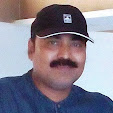The
parliament house originally known as 'Council House’, was planned at the
introductory stage to be a part of the Rashtrapati
Bhavan. But in 1919 according to the Montague-Chelmsford reforms, it was announced to be designed as the Indian
parliament. Various designs of the building were planned from a triangular to a
Roman colosseum like structure and which paved way for its present
circular designed colonnaded verandah, with 144 pillars
and 560 feet diameter. The foundation stone of the council House was laid on
February 12, 1921 by the Prince Arthur, Duke of Connaught, third son of Queen Victoria. The building in
pale and red Dholpur sandstone,
used the same theme as neighbouring Secretariat Building. The building spread over nearly six acres was
inaugurated on January 18, 1927 by then Governor-General of India, Lord Irwin. It is now commonly known as Sansad Bhavan.
General
elections to the first Lok Sabha since independence were held in India were
held between 25 October 1951 and 21 February 1952. The Indian National Congress (INC) stormed into power with 364 of the 489 seat.
With this, India's grand old party managed to secure 45 per cent of the total
votes polled. An electoral participation of 44.87 per cent was reported across
the country. Pandit Jawaharlal Nehru became the first elected Prime Minister of
the country, his party winning 44.99% (47,665,875) of the votes cast. Voter
turnout was 45.7%. The
first votes of this election were cast in the tehsil of
Chini in Himachal Pradesh on 25 October 1951.
The Council of States (Rajya Sabha) met
for the first time
on 13 May 1952. The
Council of States named as Rajya Sabha in Hindi on
23 August 1954. The Chairman, Rajya Sabha made an announcement in the House
that the Council of States would now be called ‘Rajya Sabha’ in Hindi. The first Chairman of Rajya Sabha was
Dr. S. Radhakrishnan. He was the
only Chairman to have two terms (13.5.1952-12.5.1962).
But the observation of Sixty Years of Parliament is
also a time for introspection. Criminalisation and corruption are two main
cause of concern apart from Communalism and Casteism. The number of criminal-turned-Members of Parliament has increased from
128 to 150, when compared to the 2004 elections. A study conducted by
the National Election Watch suggests that out of those 150 MPs, 73 have serious
charges levelled against them. According to the report, there has been an
increase of 17.2 per cent in terms of criminal candidates when compared to 2004
results. The Bharatiya Janata Party tops the list of criminal candidates with
42. The Congress is a close second with 41 tainted candidates. Among the states
Uttar Pradesh tops the list with 31 criminal candidates of which 22 have
serious charges. Maharashtra comes second among the states with 23 candidates
with criminal charges. In the then Lok Sabha Jagadish
Sharma of Janata Dal- United elected from the Jahanabad constituency toped the
list. He was an accused in 6 cases and there are 17 serious counts under the
Indian Penal Code booked against him. As of December 2008, 120 of India's 523
parliament members were facing criminal charges. Many of the biggest scandals since 2010 have involved very high
levels of government, including Cabinet Ministers and Chief Ministers, such as
in the 2G
spectrum scam, the 2010
Commonwealth Games scam and
the Adarsh Housing
Society scam, mining scandal in Karnataka and cash for vote
scam.
The Vohra Report, submitted
by the former Indian Union Home Secretary, N.N. Vohra, in October
1993, studied the problem of the criminalisation of politics and of the nexus
among criminals, politicians and bureaucrats in India. The report contained several
observations made by official agencies on the criminal network which was
virtually running a parallel government. It also discussed criminal gangs who
enjoyed the patronage of politicians — of all political parties — and
the protection of government functionaries. It revealed that political leaders
had become the leaders of gangs. Over the years criminals had been elected to
local bodies, State Assemblies, and even the Parliament. The
unpublished annexures to the Vohra Report are believed to contain highly
explosive material.
As far corruption is concerned black
money is the main problem. Black money
refers to money removed from the official economy (via corruption, bribery, tax
evasion, etc.) and stored outside of the country. A November 2010 report from
the Washington-based Global Financial
Integrity estimates that India lost at least US$462 billion in illicit financial
flows, another word for black money, from 1948 through 2008. The
report also estimated the size of India's underground economy at approximately
US$640 billion at the end of 2008 or roughly 50% of the nation's GDP. According
to a 2010 The Hindu article,
unofficial estimates indicate that Indians had over US$1456 billion in
black money stored in Swiss banks (approximately
USD 1.4 trillion).While some news reports claimed that data provided by the
Swiss Banking Association Report (2006) showed India has more black money than
the rest of the world combined. A more recent report quoted the SBA's Head of
International Communications as saying that no such official statistics exist. Another report said that Indian-owned Swiss bank
account assets are worth 13 times the country’s national debt. The current investigation
is undertaken by the Income Tax Department.



The percentage of MPs without secondary education has decreased from 23 per cent in 1952 to 3 per cent in 2009.
ReplyDeleteThe percentage of graduates has increased from 58 per cent in 1952 to 79 per cent in 2009 (This includes MPs with post-graduate and doctorate degrees).
More MPs have post-graduate degrees than in 1952. The percentage of post-graduates has increased from 18 per cent to 29 per cent.